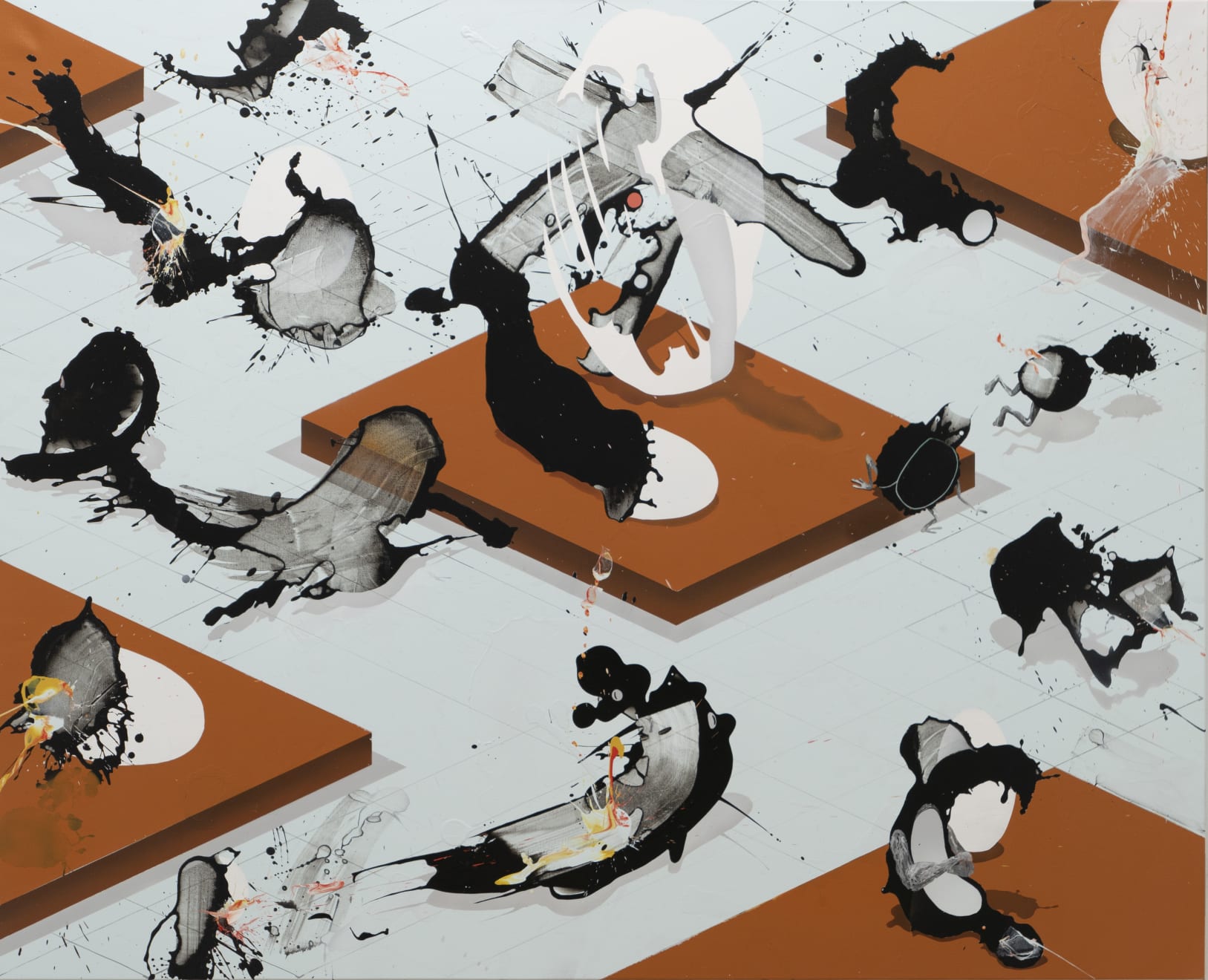The Japanese sculptor Keita Miyazaki and the Spanish painter José Castiella offer startlingly different scenarios of a post-apocalyptic world.
Miyazaki witnessed the Japanese tsunami in 2011 which swept away a great part of our industrial society. Being an expert with metals, he resolved to take one functional element of that apparently obsolete world and give it fresh life by integrating them into his sculptures. Combining car engine parts with origami inspired paper or felt creations and often adding sound, he managed to create a completely new sculptural language. Initially intending the work to be a critique of contemporary Japanese society, he quickly discovered it had universal relevance.
José Castiella’s strange, vivid, surreal paintings explore the possibility of new life forms after the collapse of our contemporary world. Castiella creates a new humanity as a way of mirroring ours. The characters in the artist’s paintings arise by chance as the artist pours paint onto the canvas laid onto the studio floor. Once attached to the wall, characters begin to appear on the canvas. These strange life-forms recall, in a contemporary sense, the world of Hieronymus Bosch.
Both Castiella and Miyazaki have succeeded in creating futuristic worlds which reflect on the excesses of our own. Miyazaki forces us to question the uncontrolled acquisitiveness inherent in industrial society, whilst Castiella’s world is populated by deformed creatures, rather as if, after the world has been destroyed by the virus, a completely new form of humanity emerges.
The Armory Show 2021
9 - 12 September 2021





